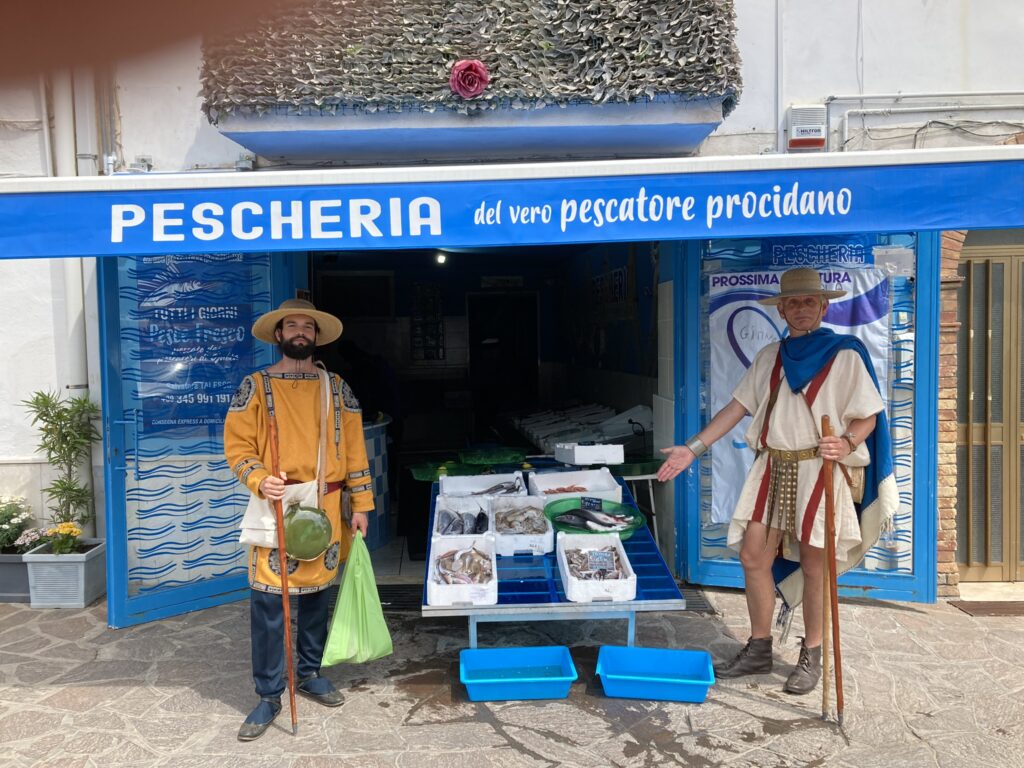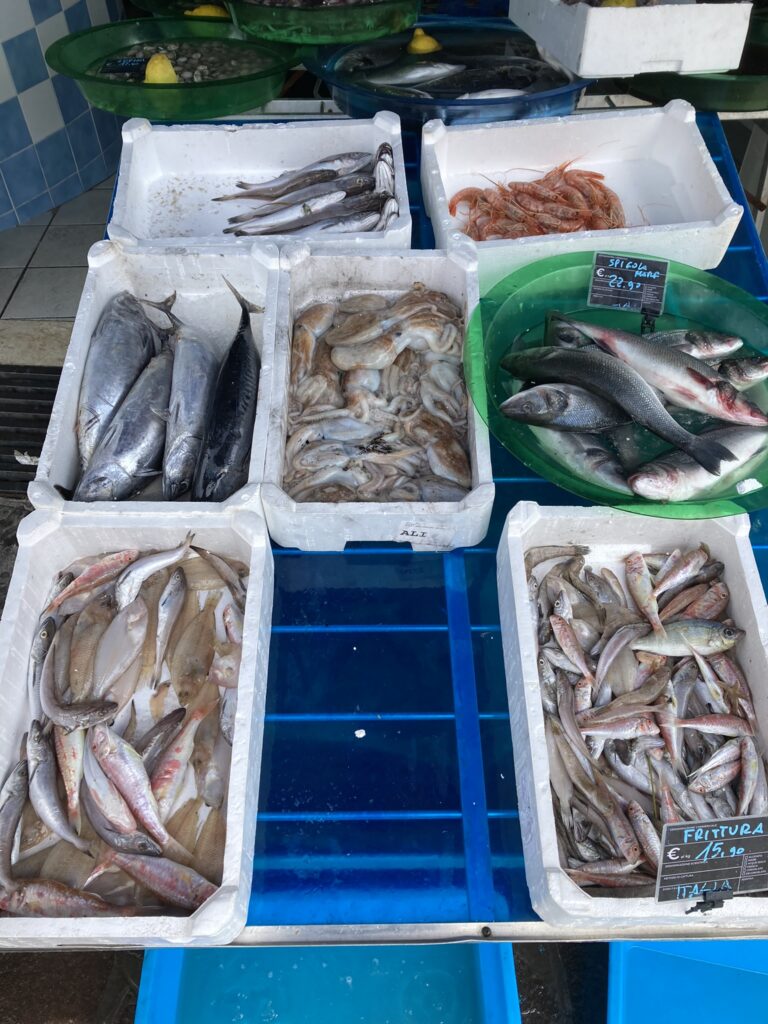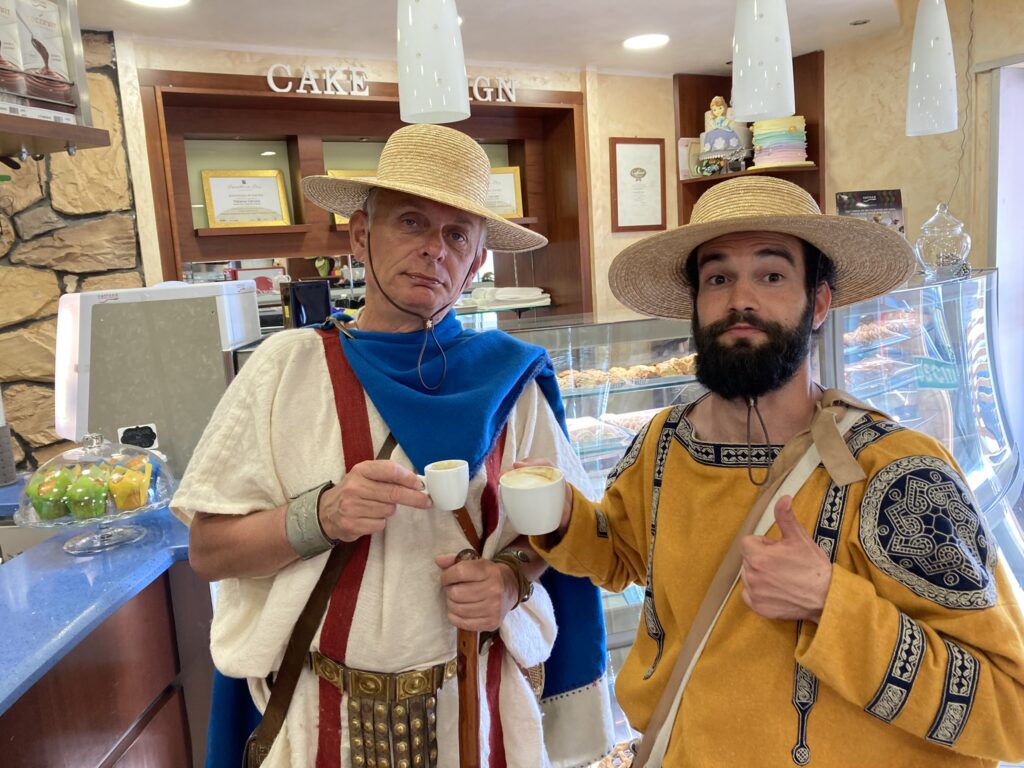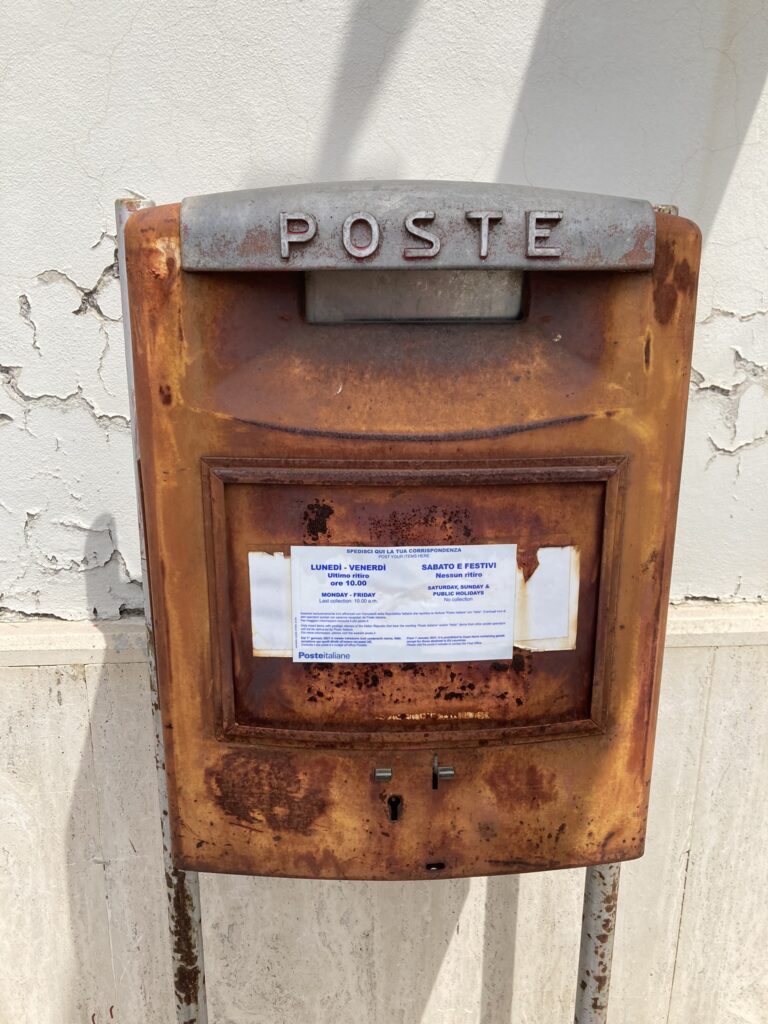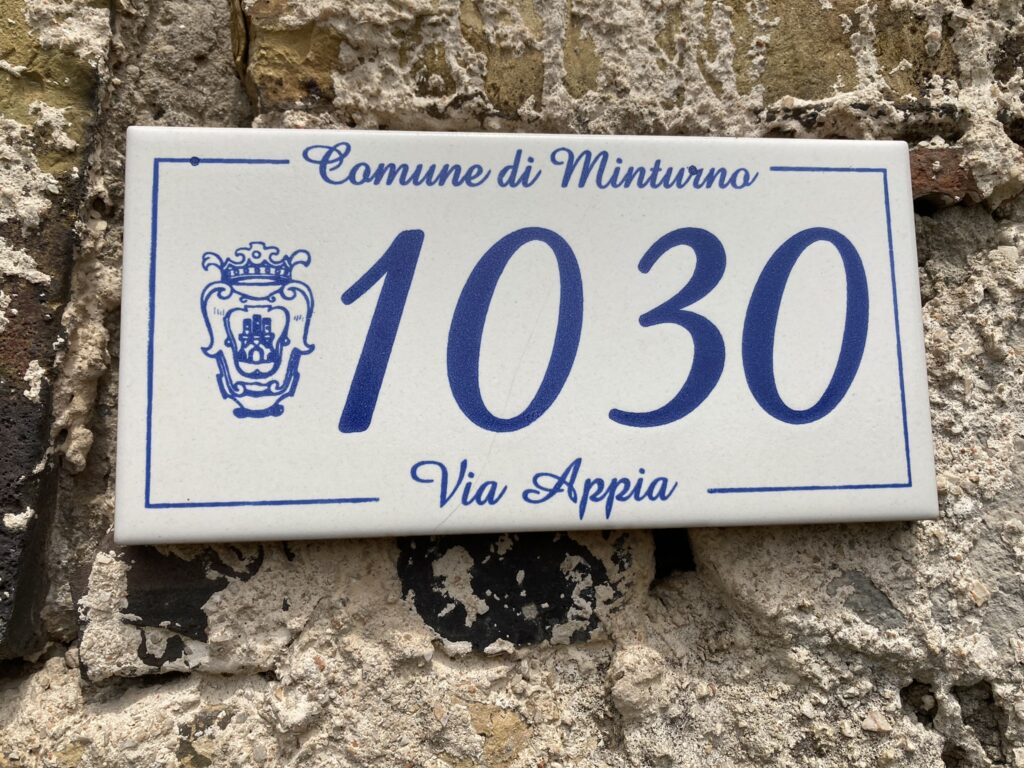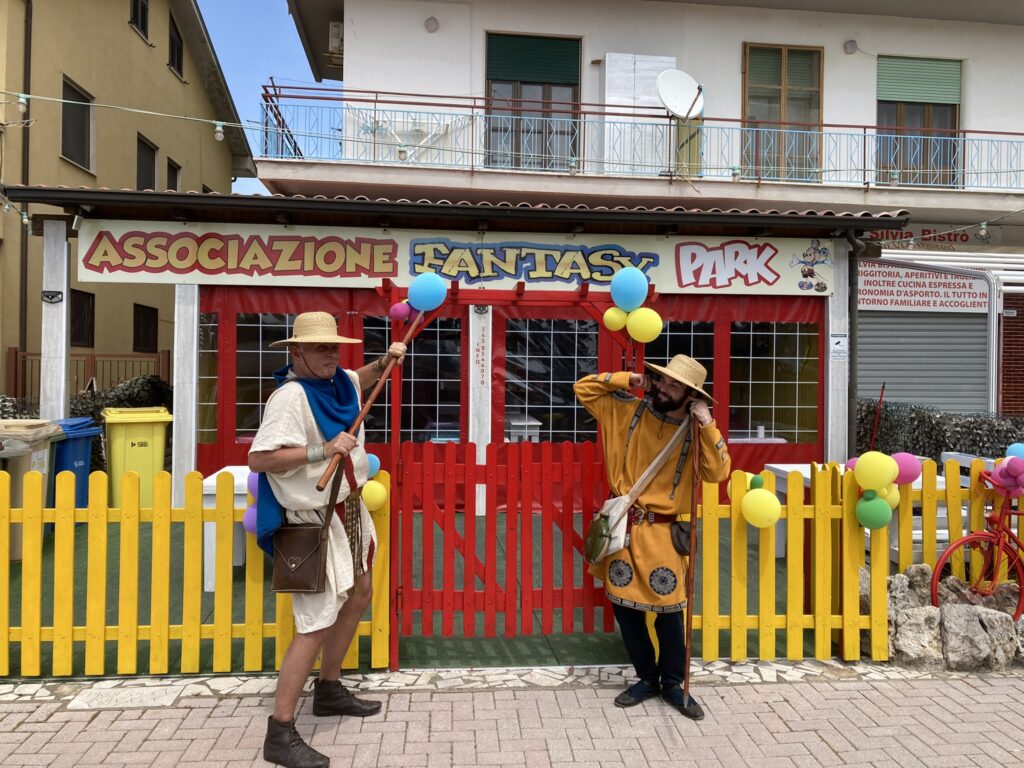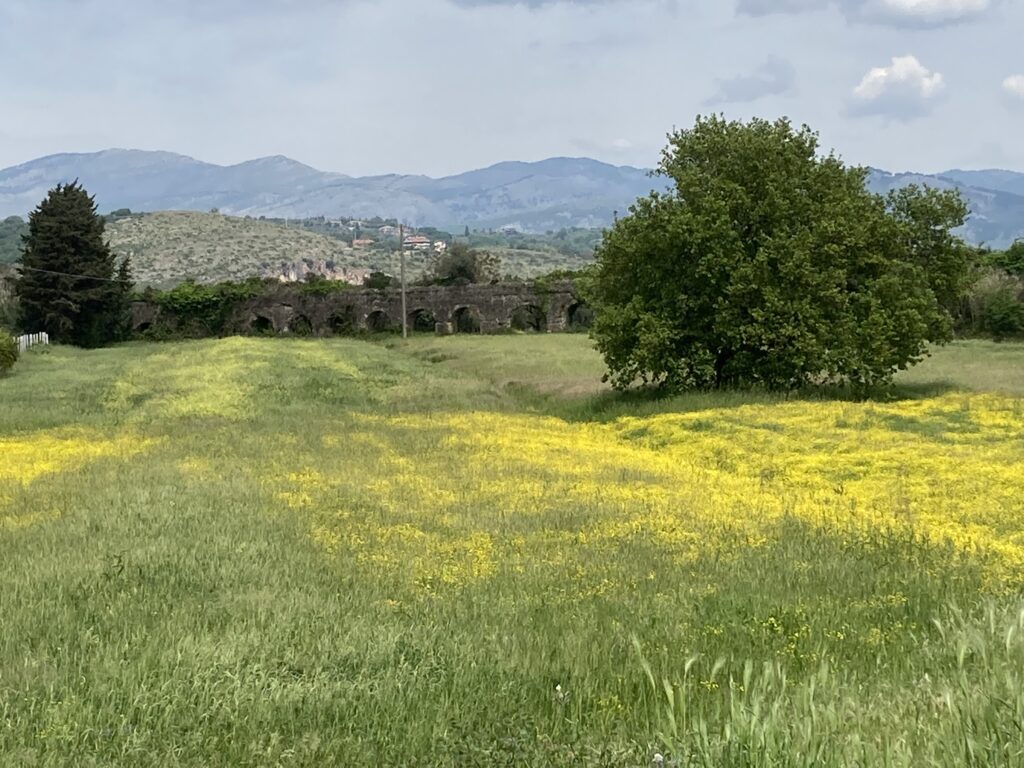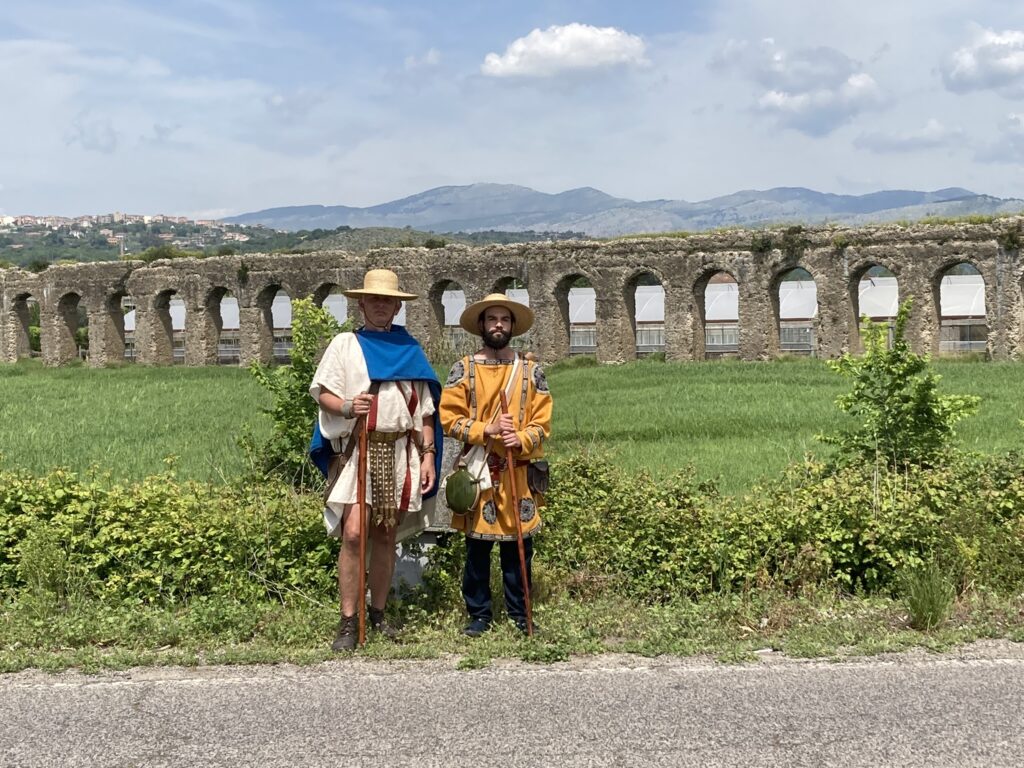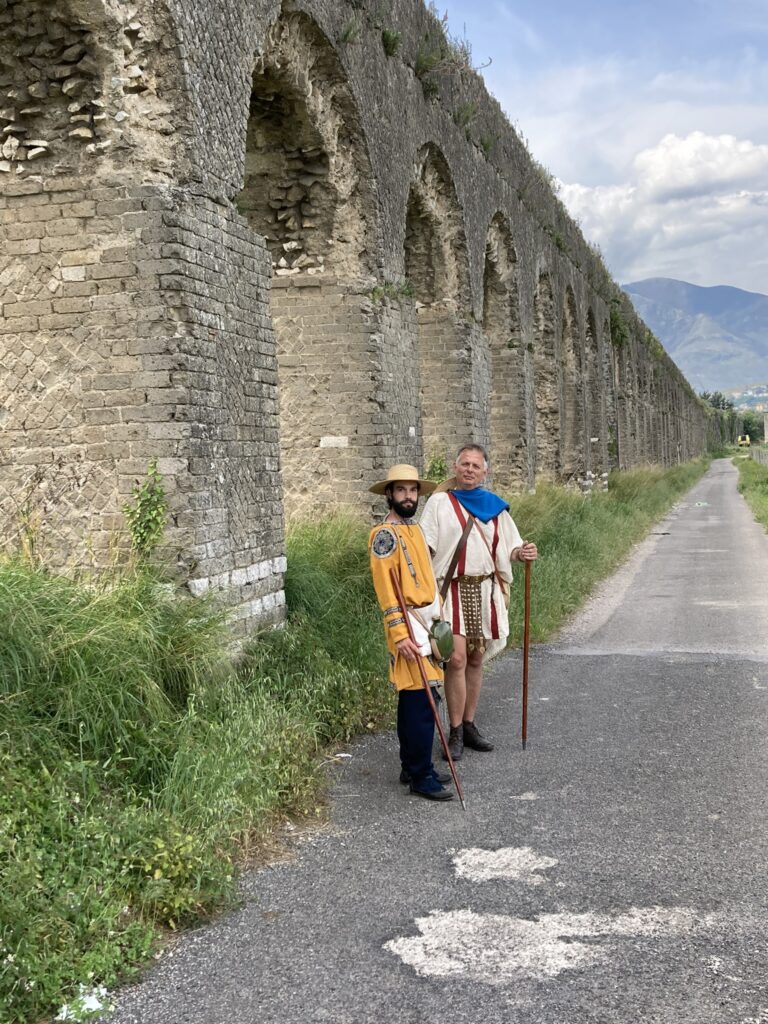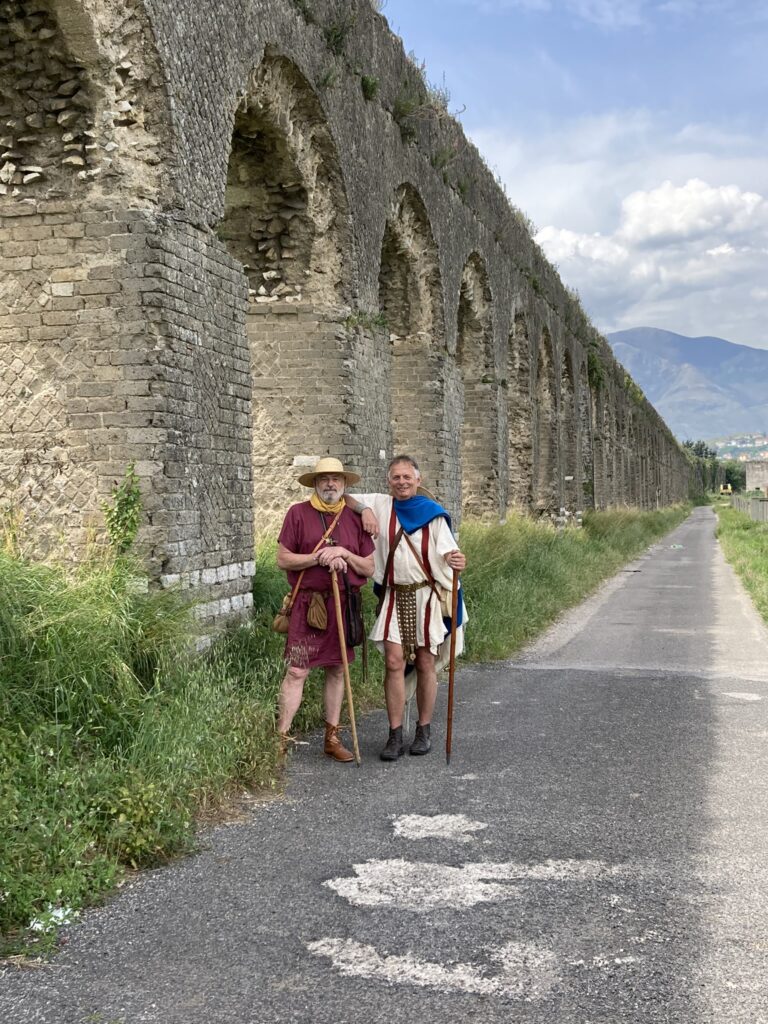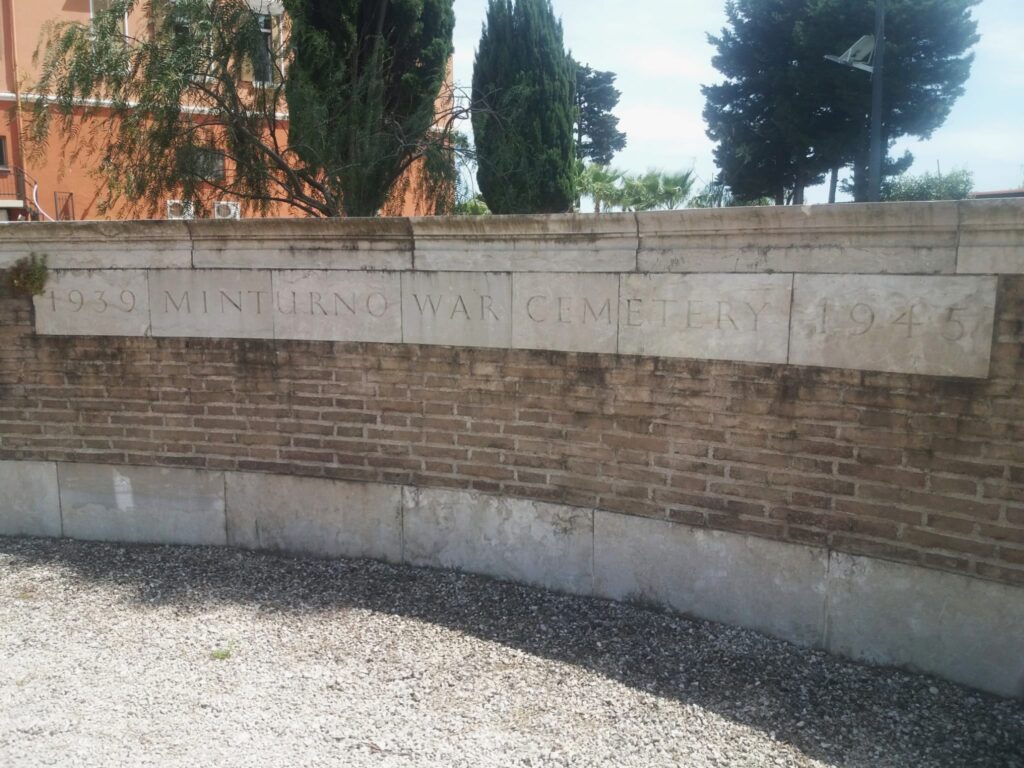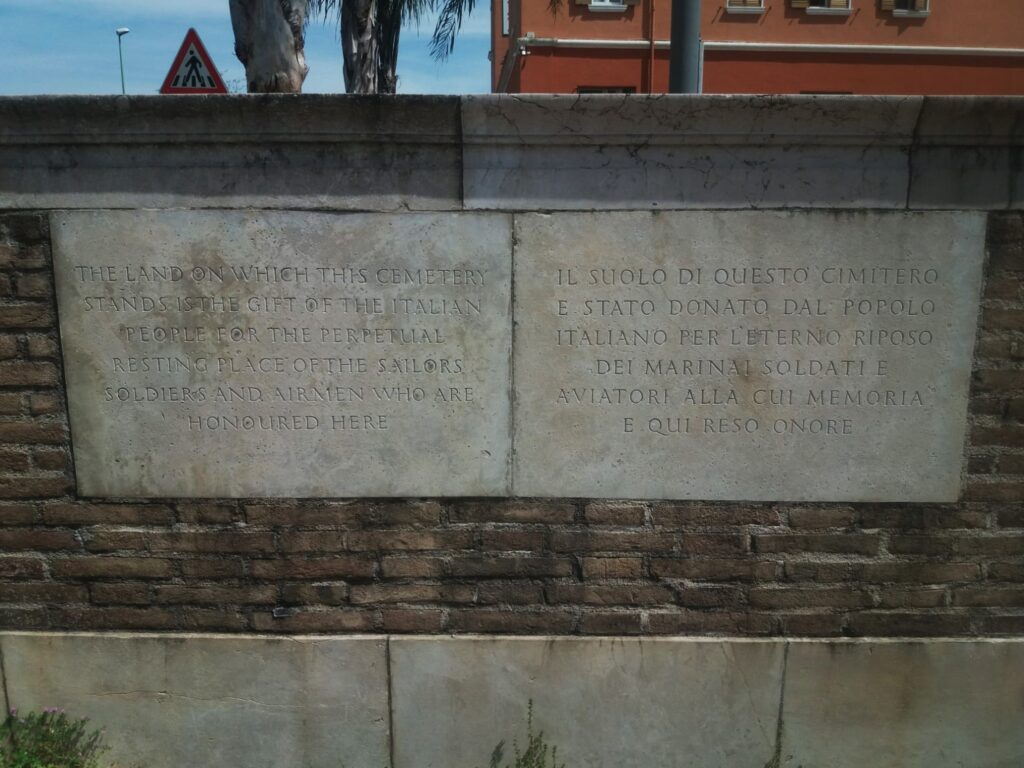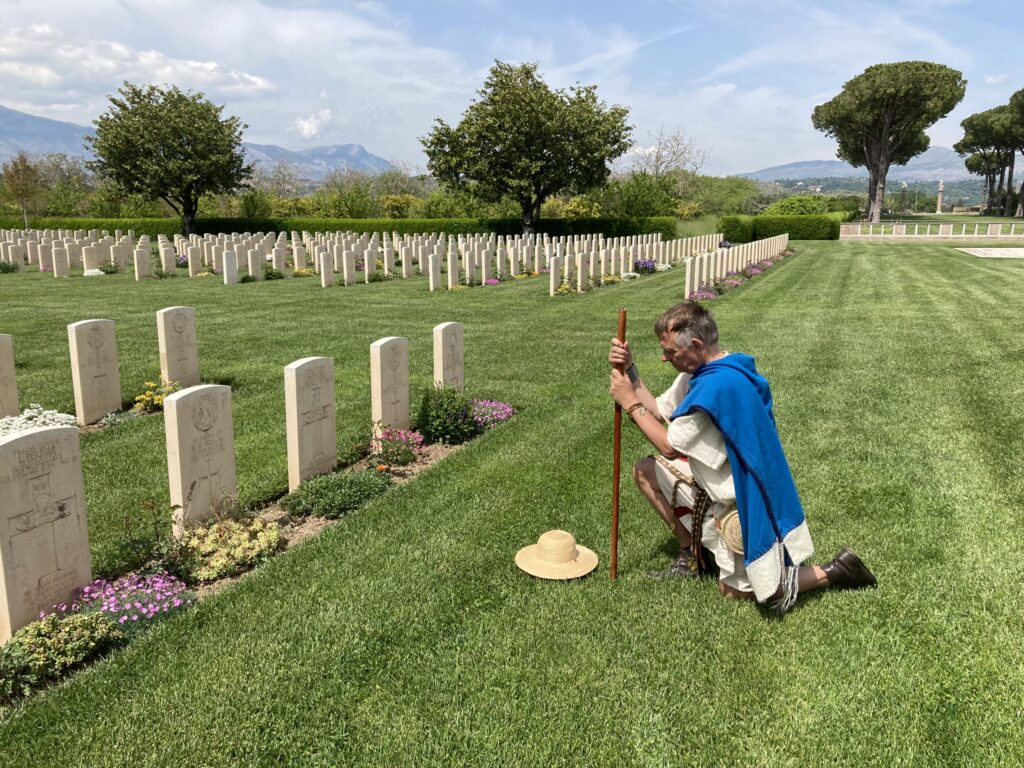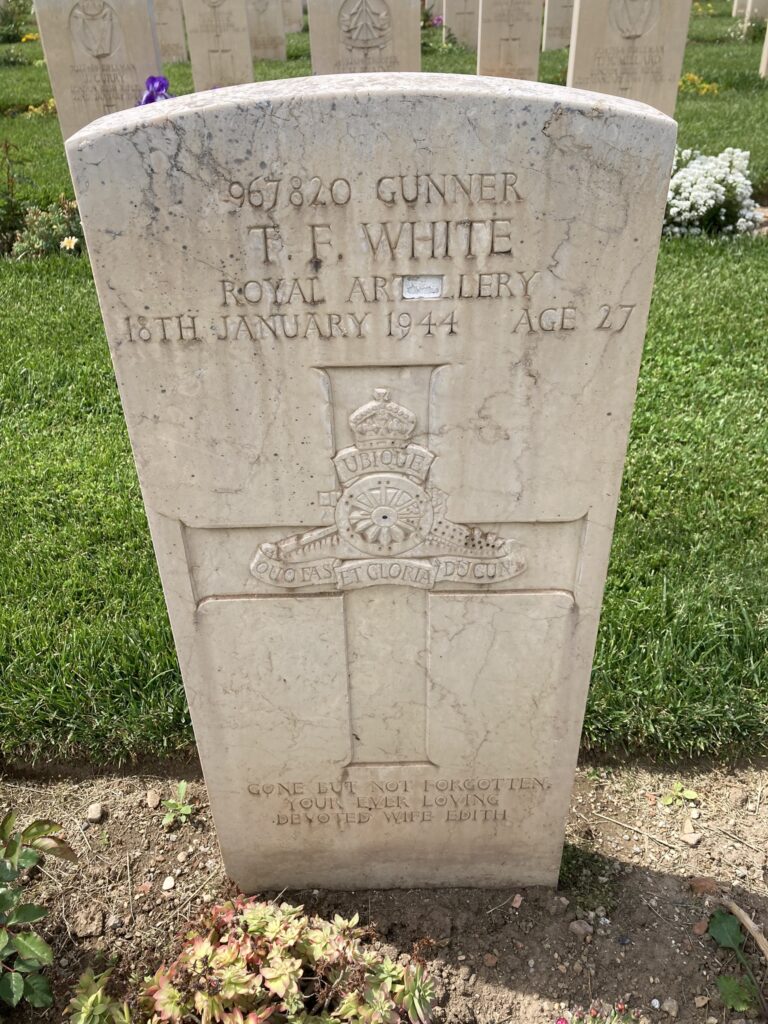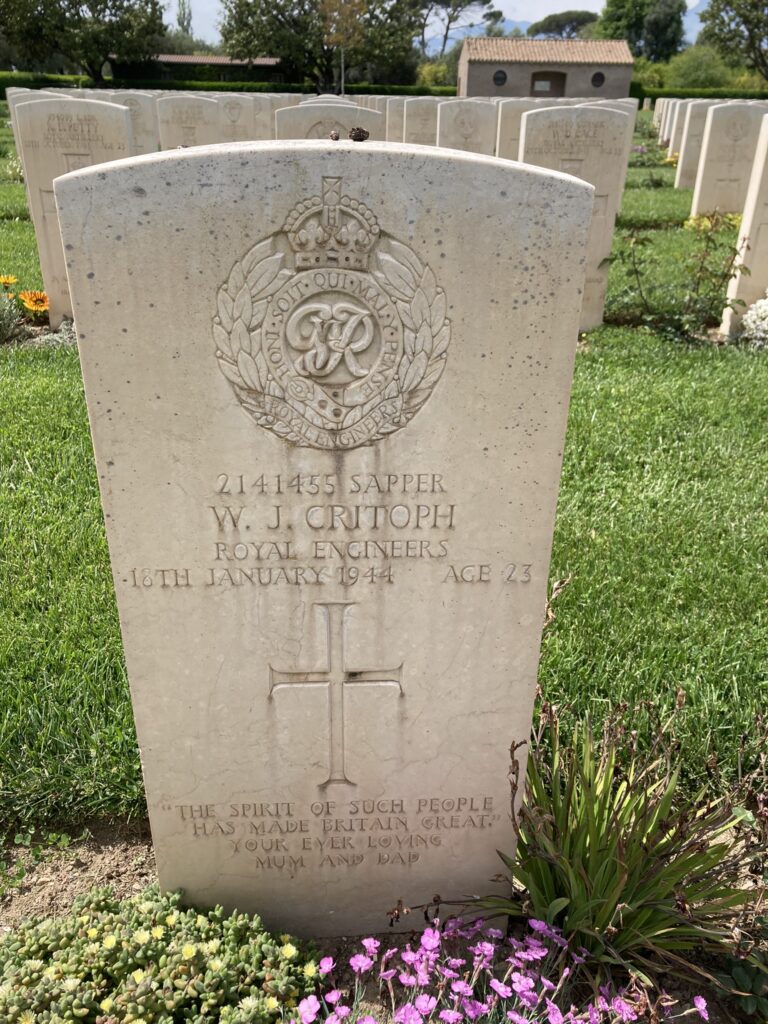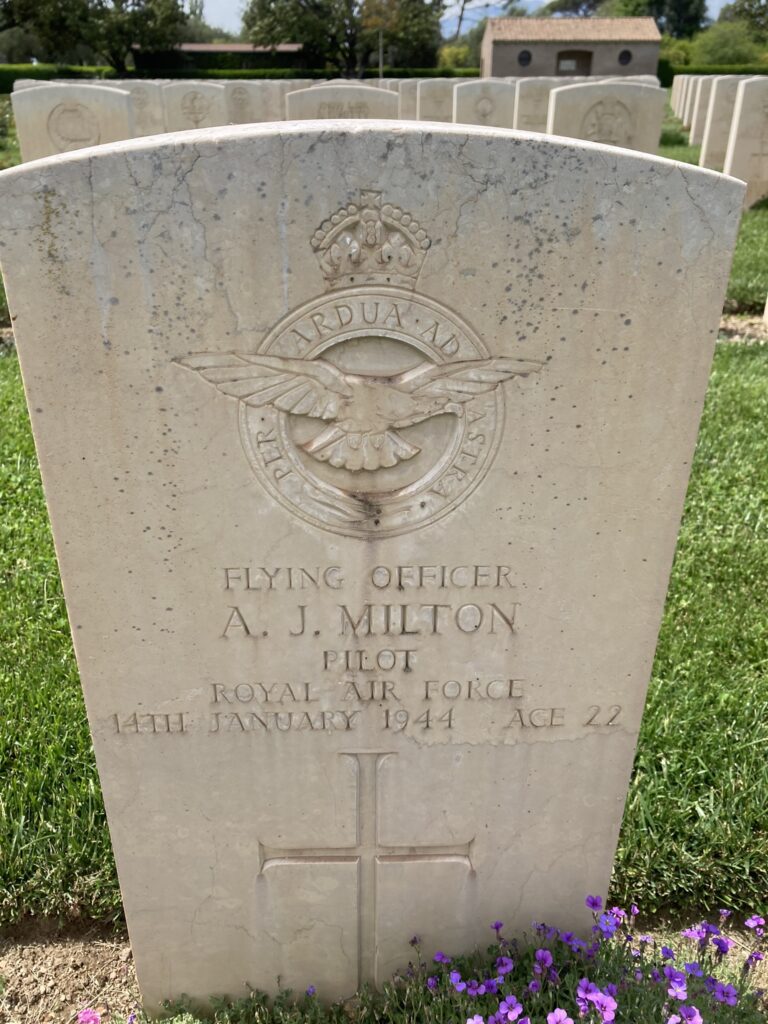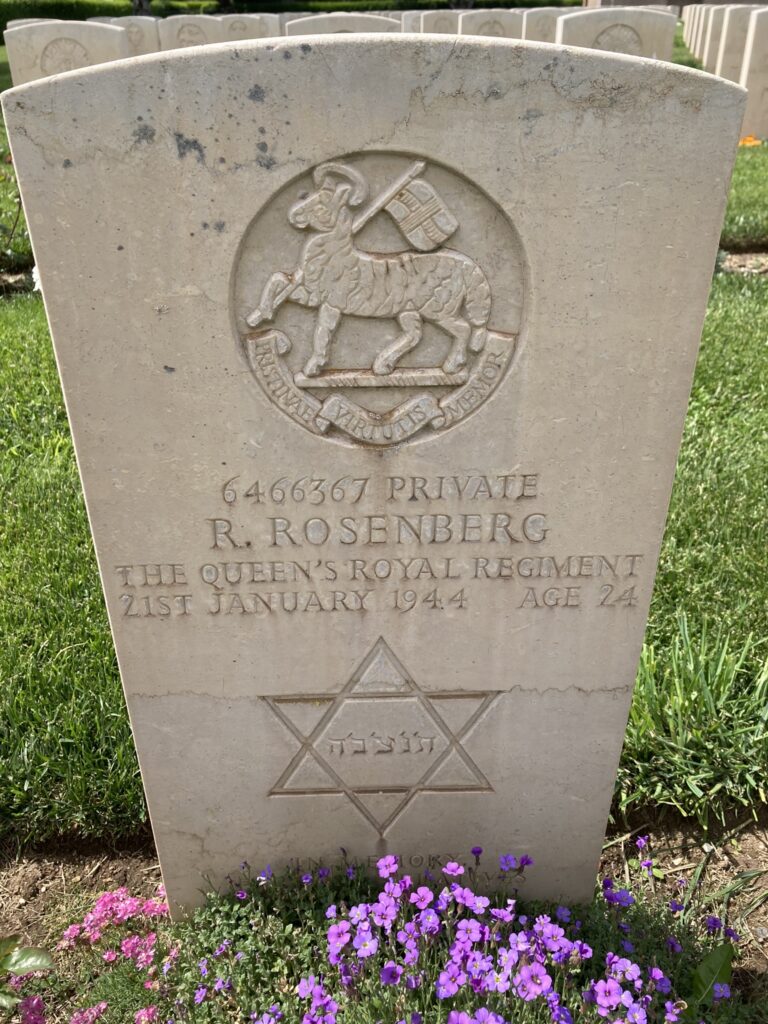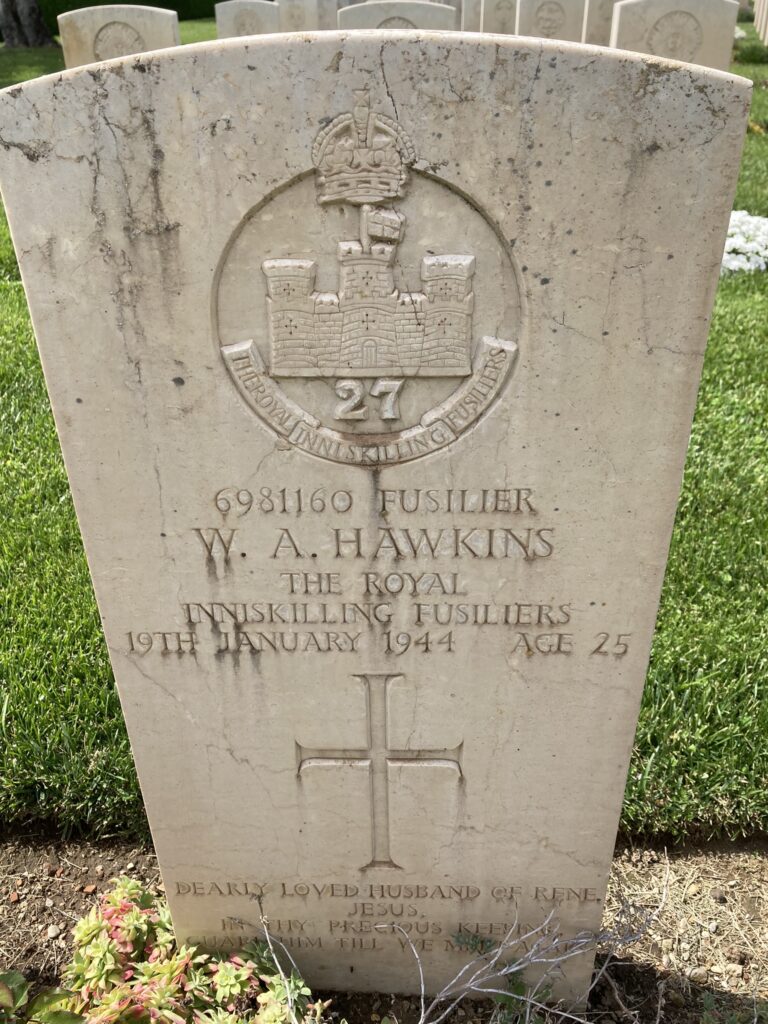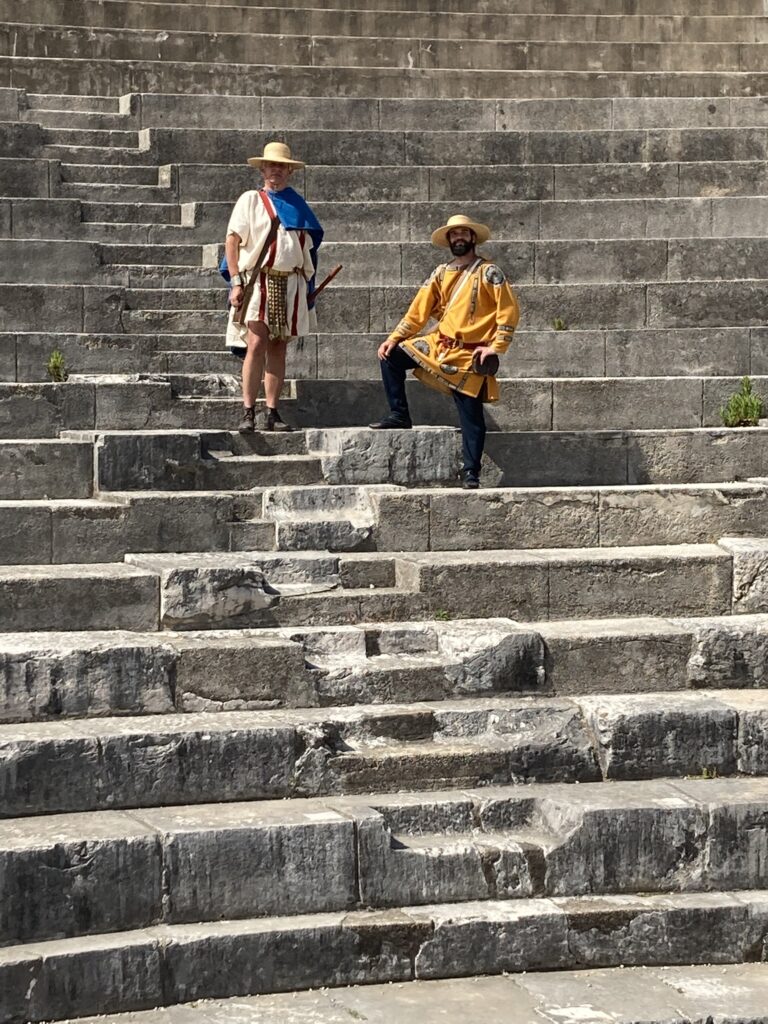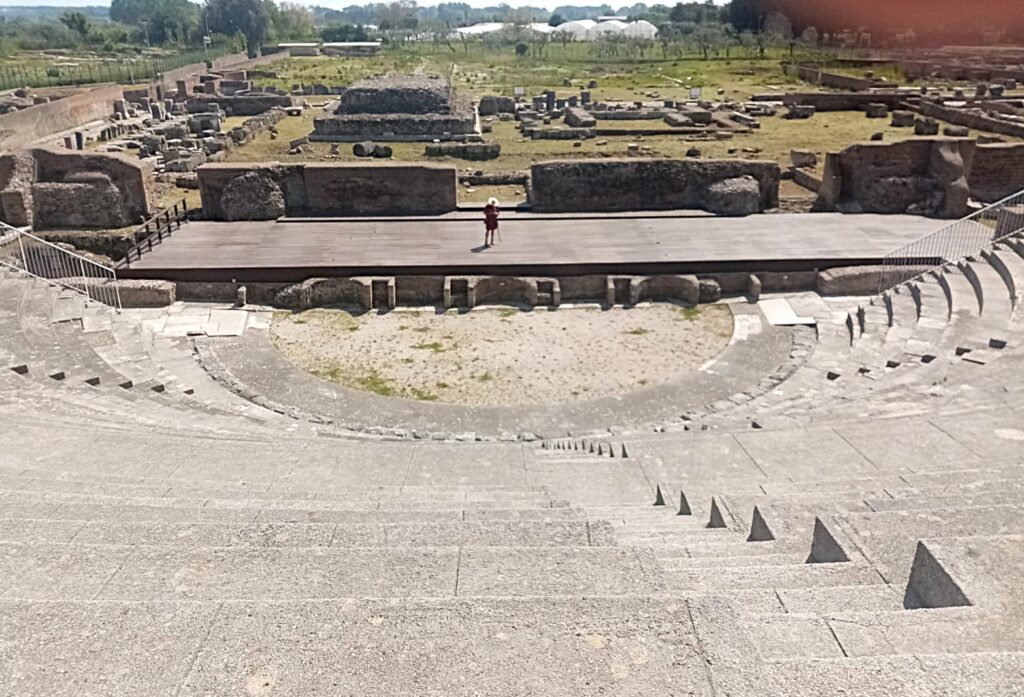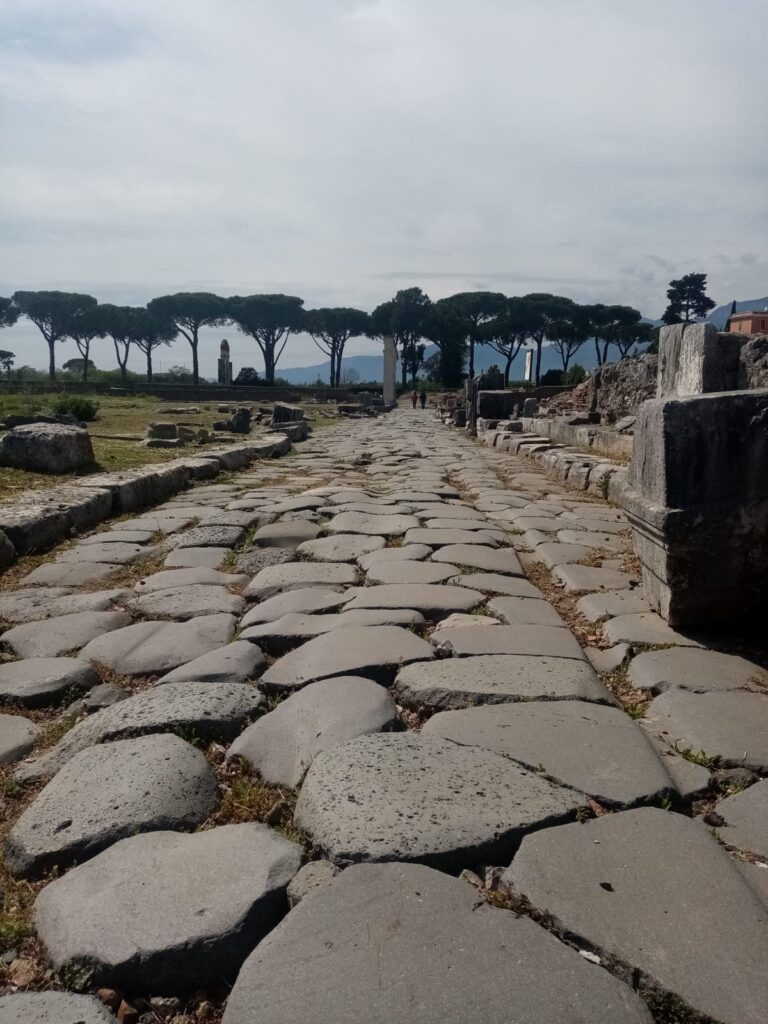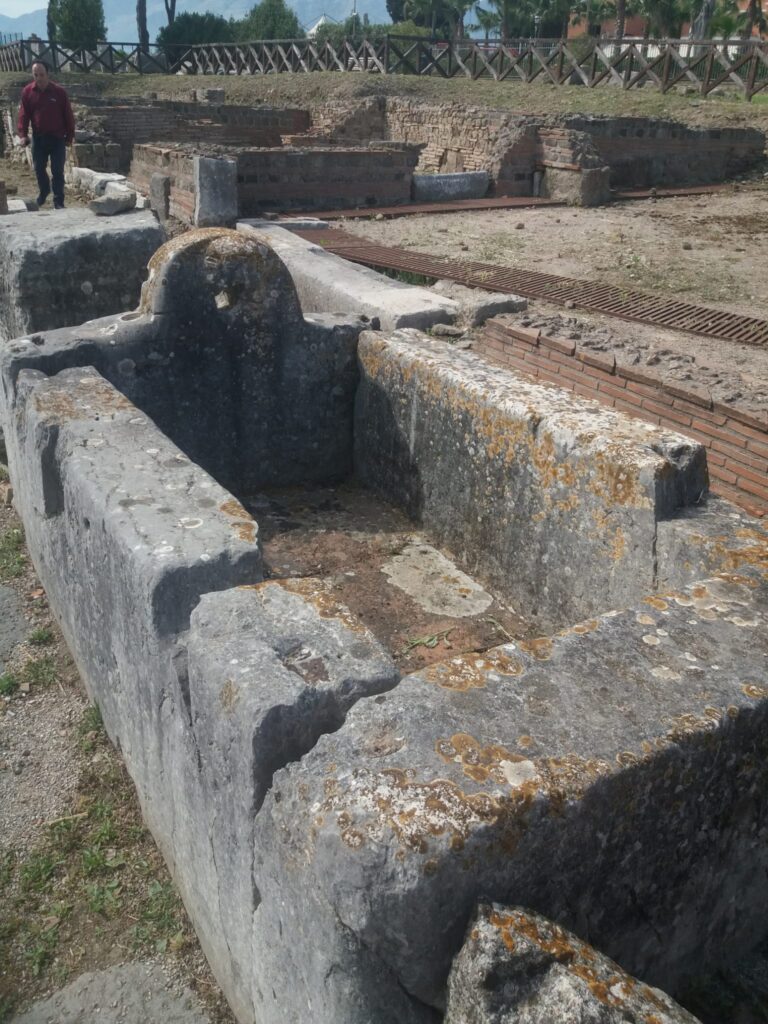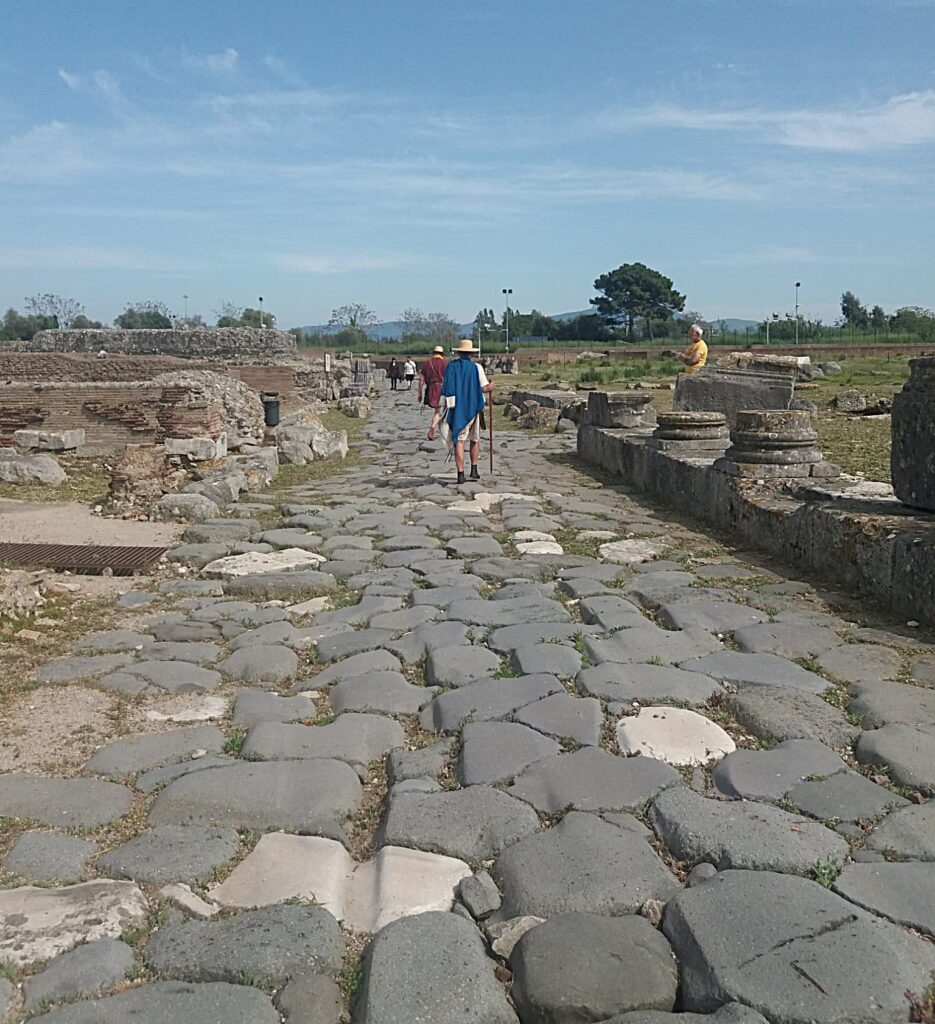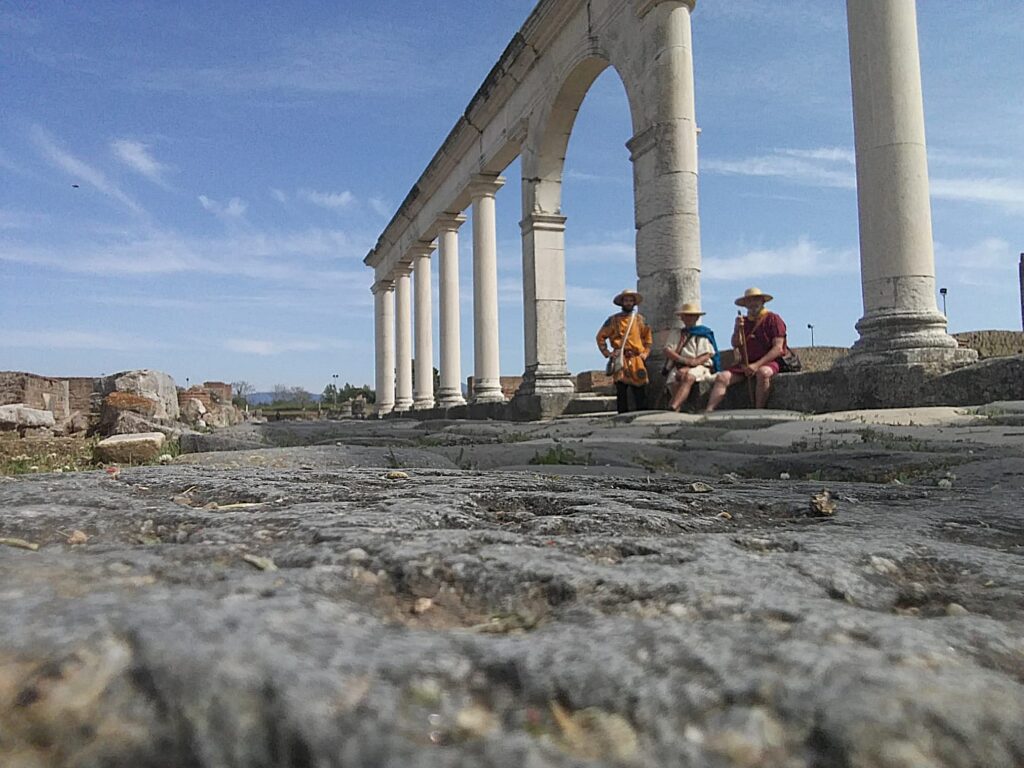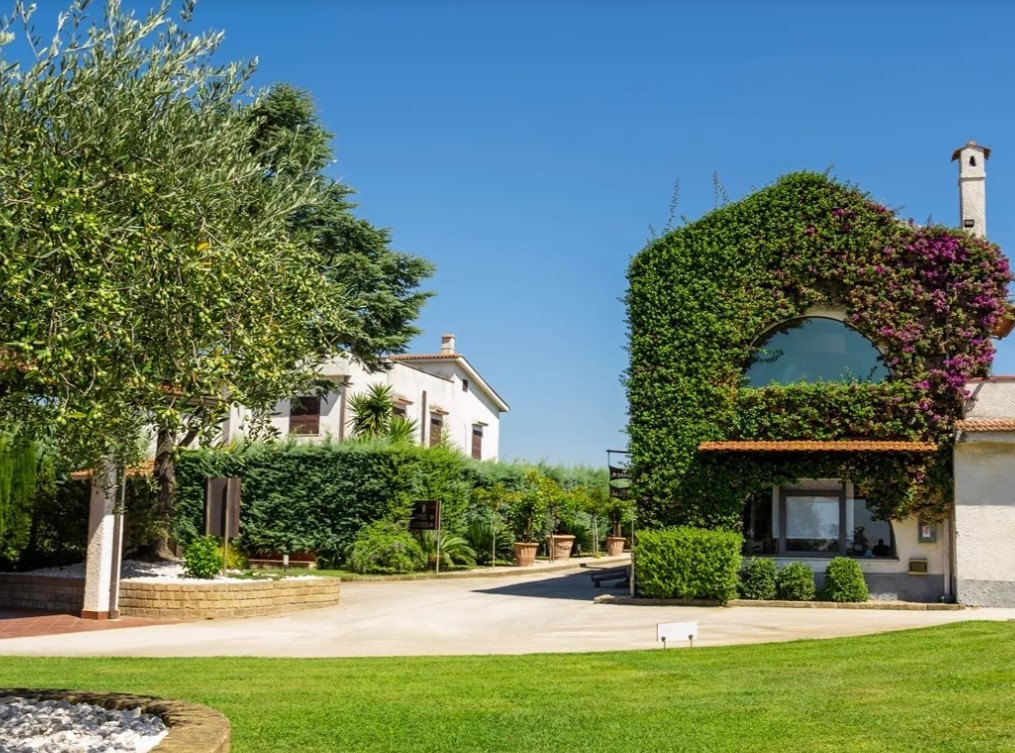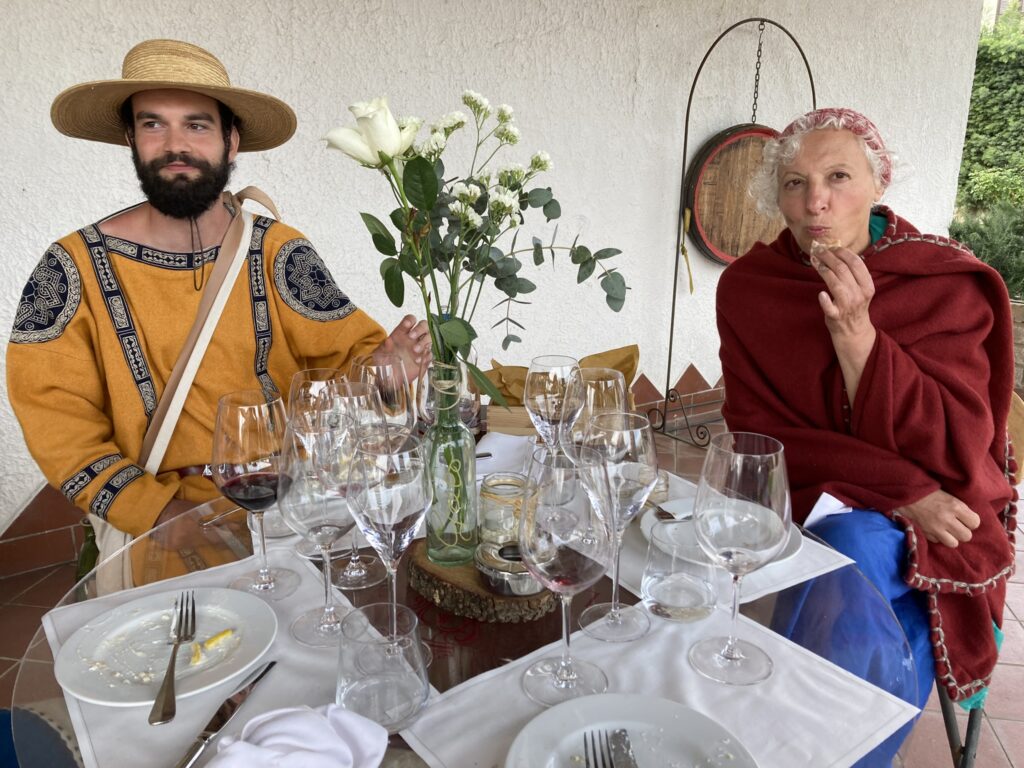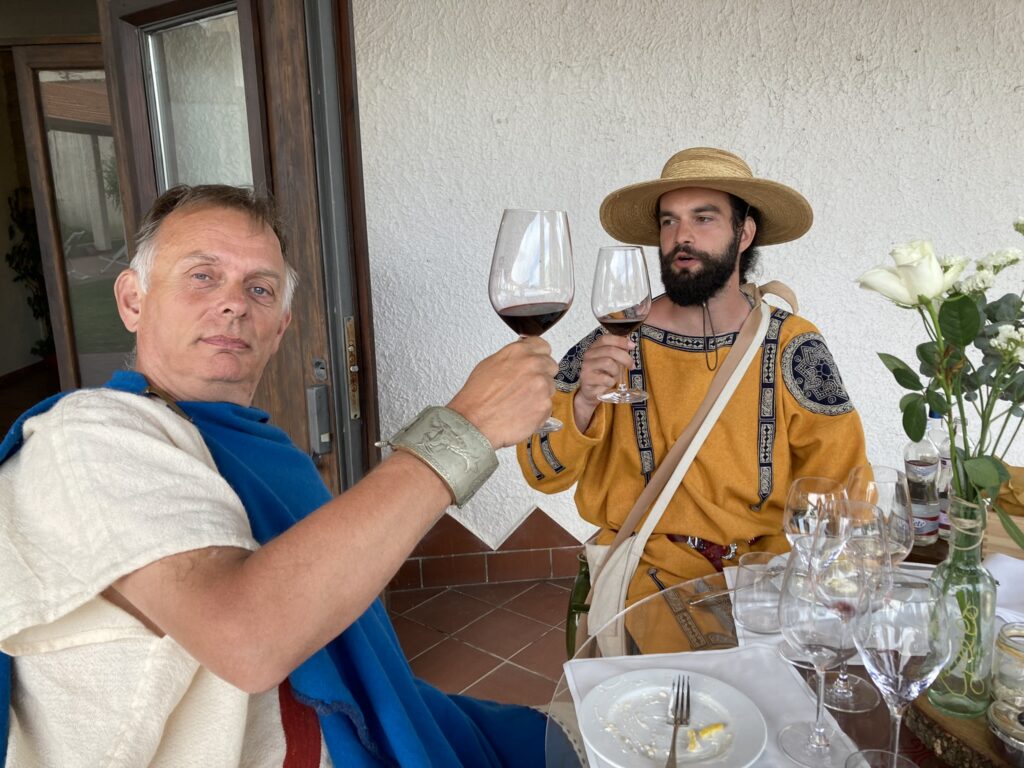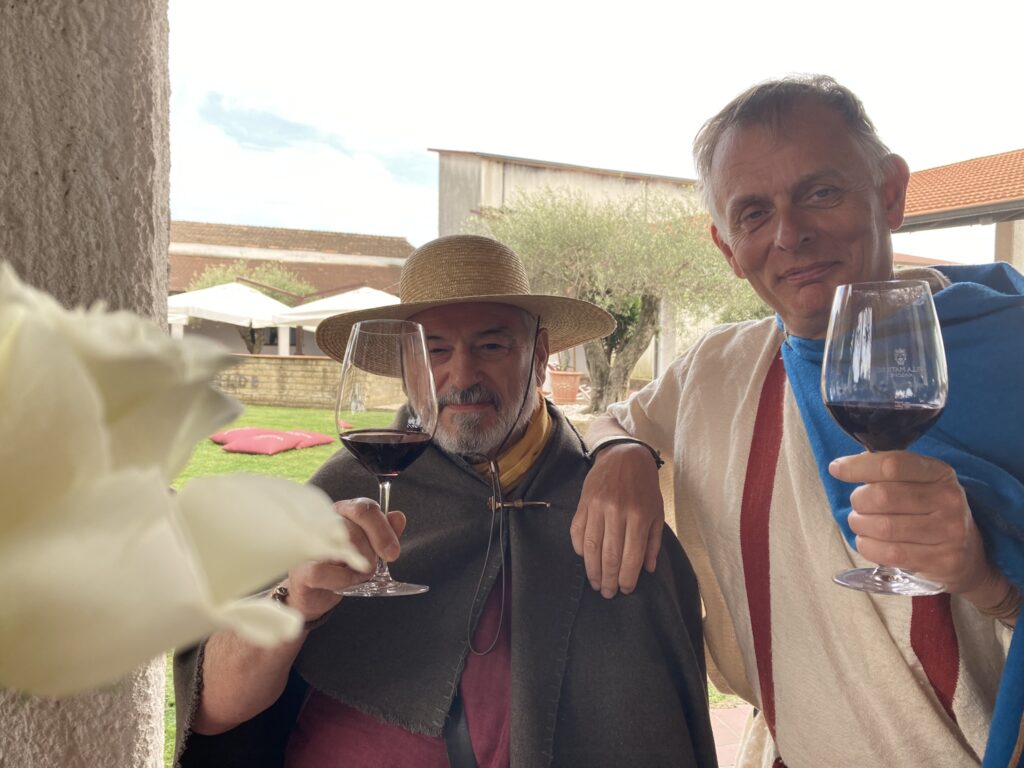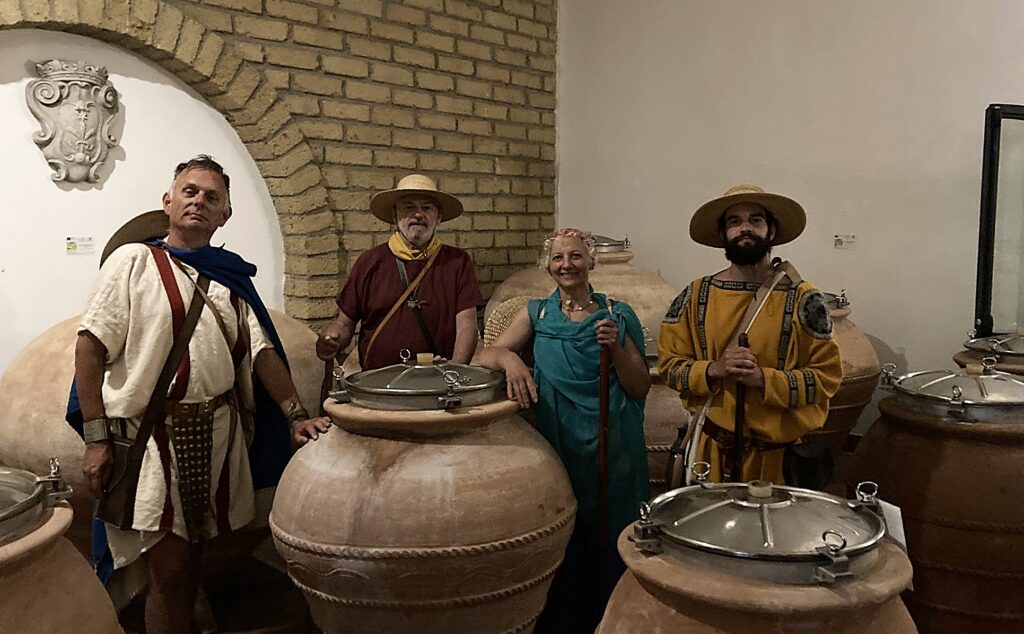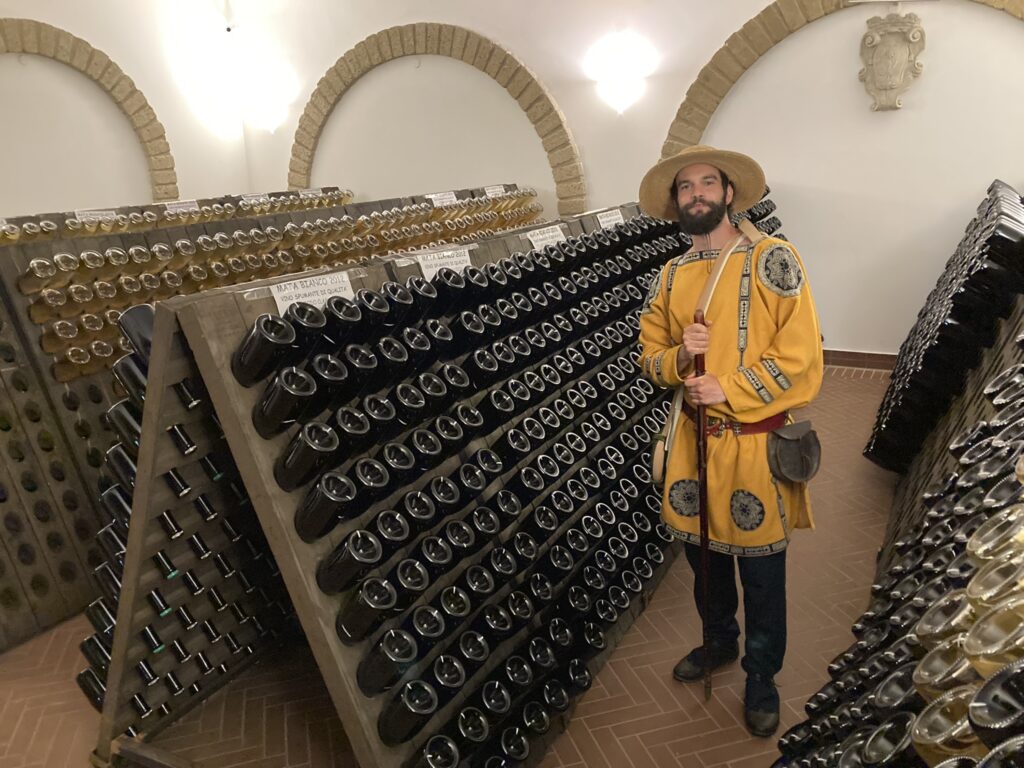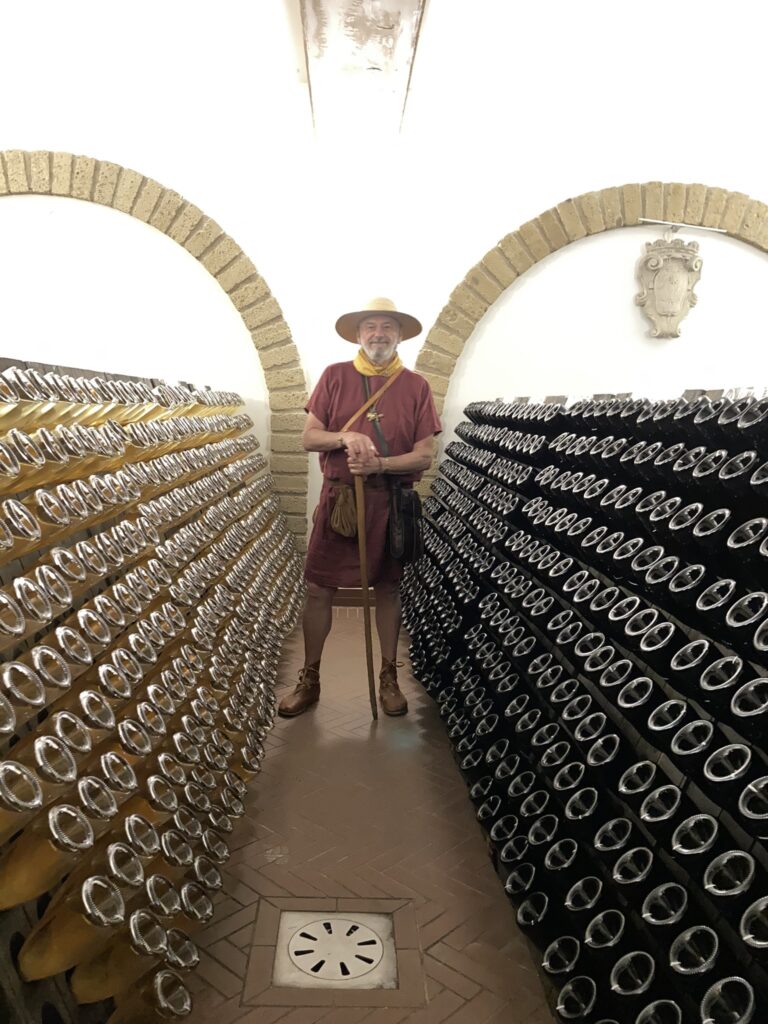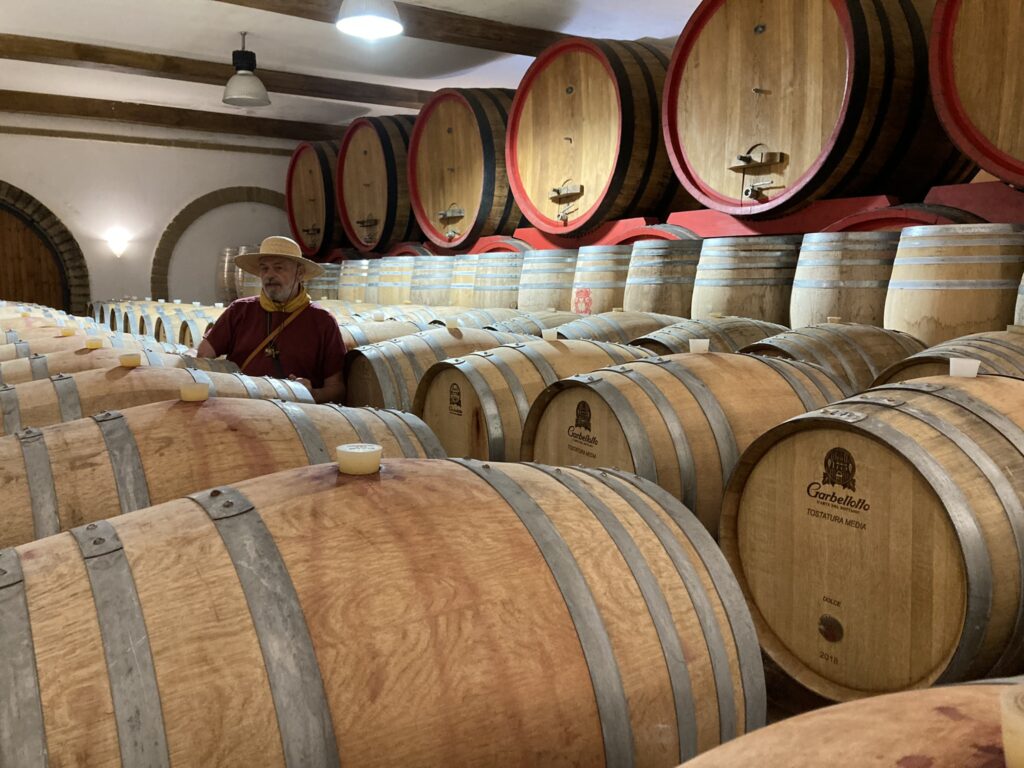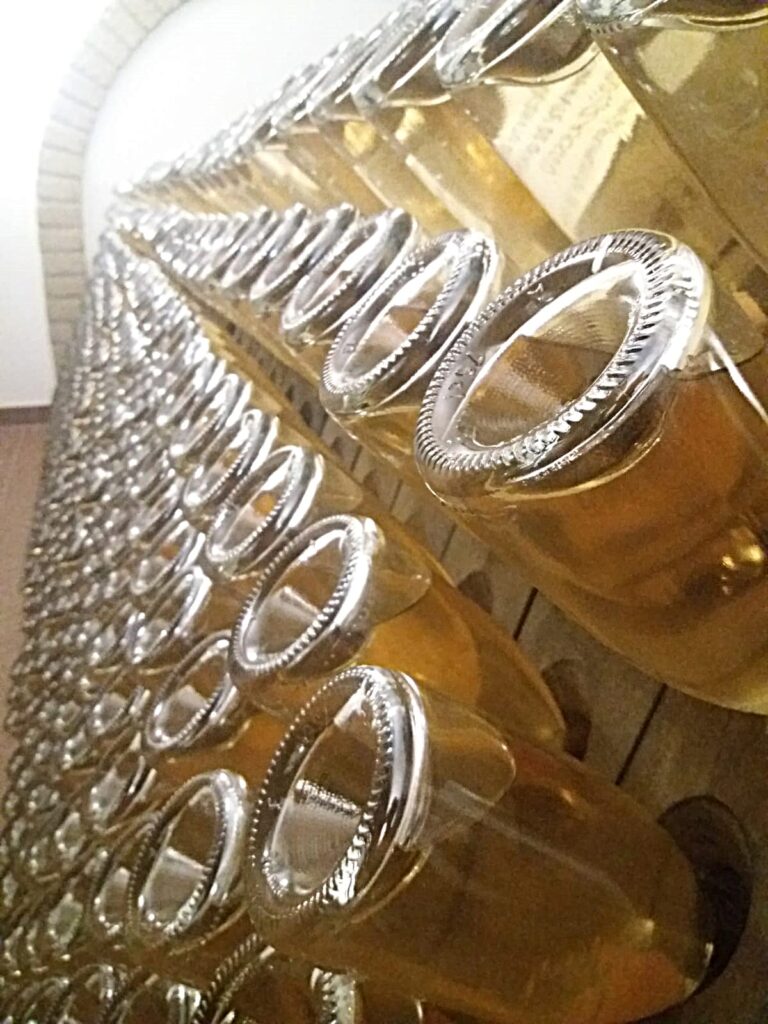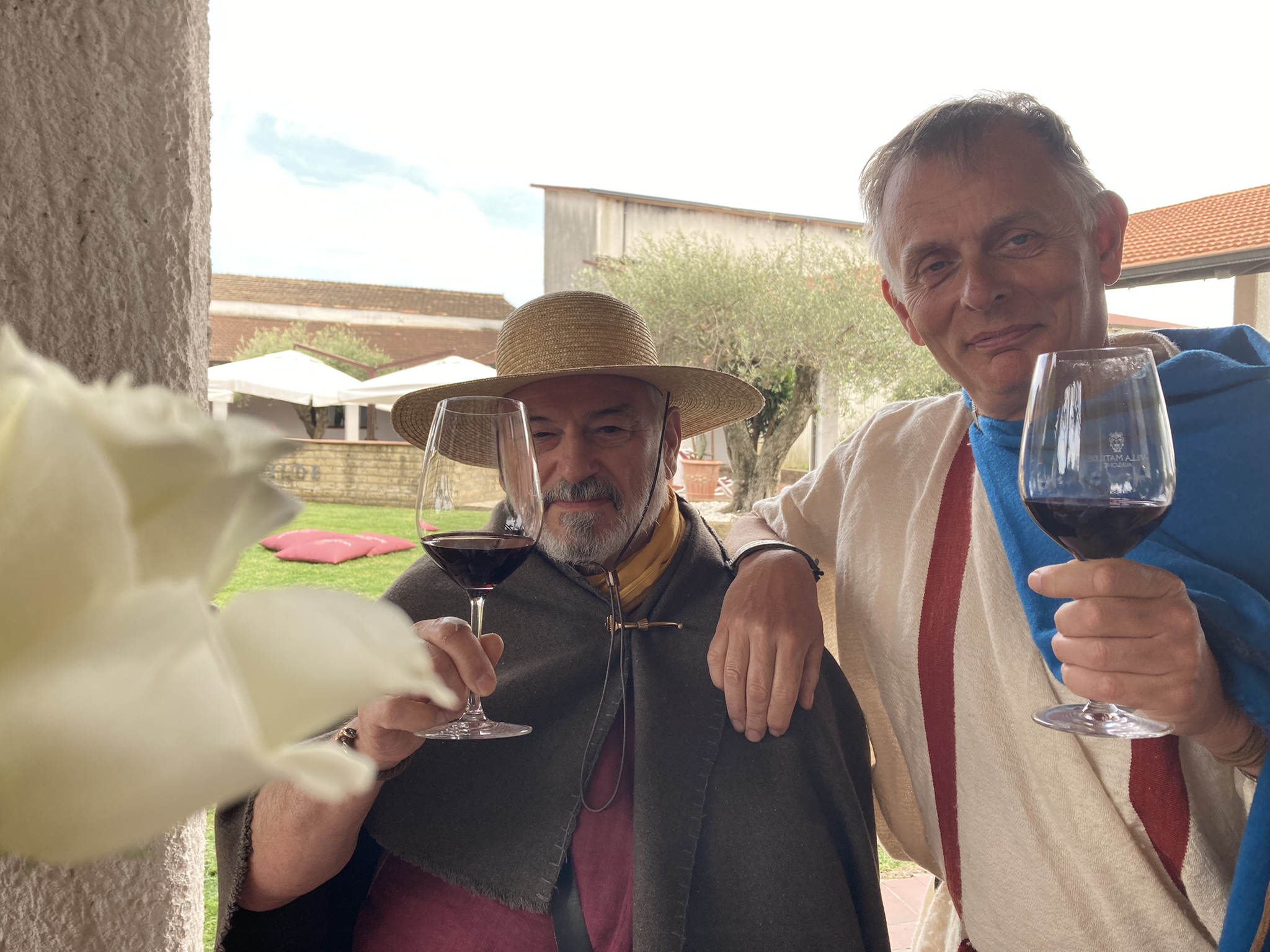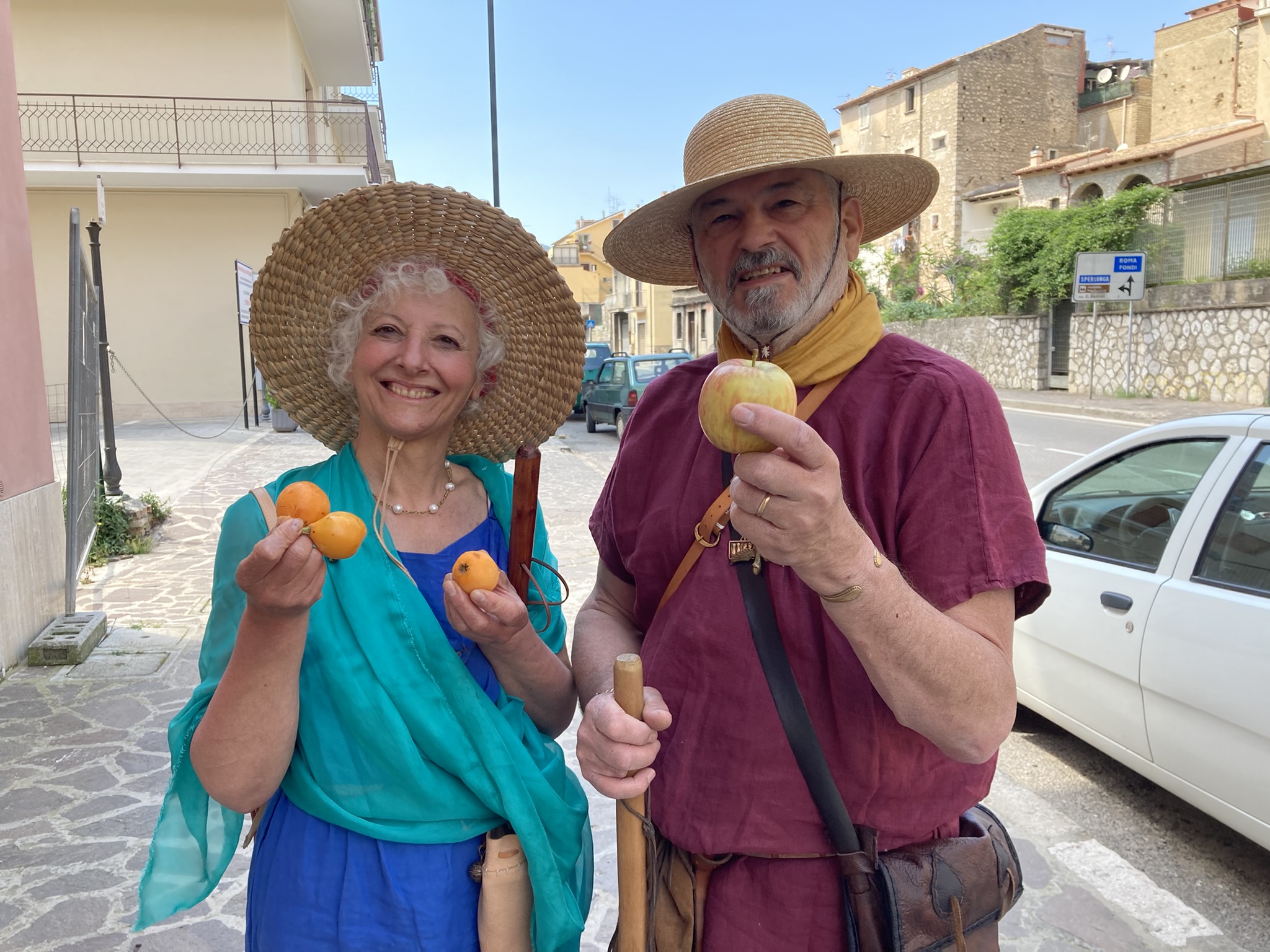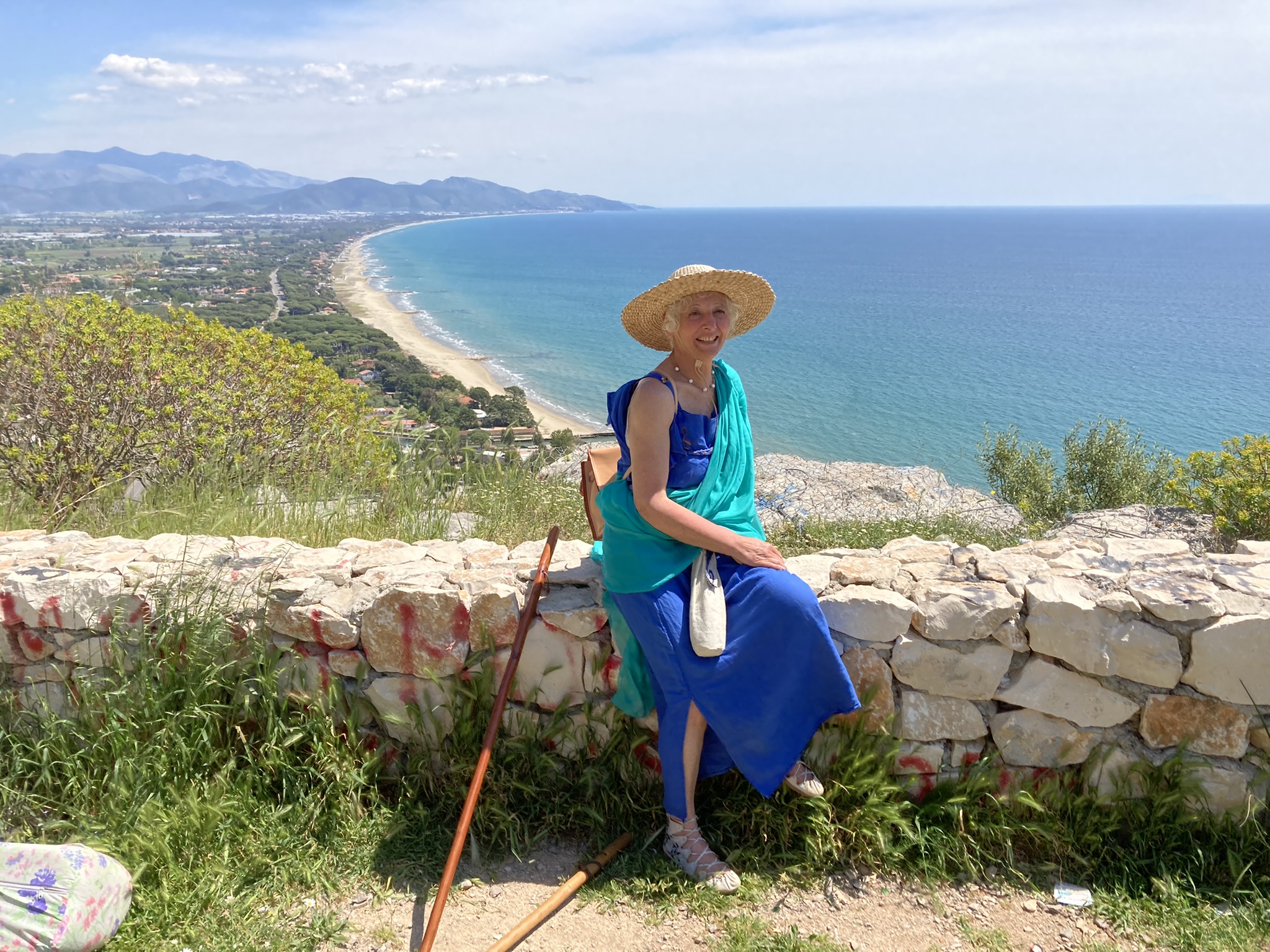Shortly after waking up, Archaeologist Gianmatteo Matullo who works in and around Formia knocked on our door with four hot coffees. While we consumed the highly appreciated coffee’s Gianmatteo was amazed by our Roman gear and footwear. After a quick chat he bid us farewell since he had an appointment with a group of persons to tour them at Minturnae.
Leaving early is becoming difficult if not impossible and also today we left around 10.30. Lucina took control of the car just outside Formia and we, Erik, Pedro and I, left on foot to Minturnae. Not far from our starting point we passed the shop of fishmonger Salvatore Talesco with whom I started a chat. When he found out that we were going to walk the Appia and that I could name many of the fish in his shop he told me to wait. He went back into his shop and came out with two bags full of fish. Slices of tuna, small Cod, Mazzancolla or Caramote prawns, squid etc, etc. Very nice but wat to do with the fish when we still had 9 km to walk?
I called Lucina and she drove back to where we were to pick up the bags with the fish. At the same time, I send an email to Ms. Maria Ida Avallone the owner of the Villa Matilde vineyard where we were going to sleep that night and informed here that we were going to deliver some fish. Se rapidly answered that this was ok and that their kitchen staff would place our fish in one of their refrigerators.
From the fish market we continued our walk on the Appia and around two o’clock the aqueduct of Minturnae came into view. After taking some pictures at the aqueduct we moved onwards to Minturnae itself but after we had walked 220 meters our attention was drawn by a beautiful laid out and maintained commonwealth war cemetery where we could not walk past without quite a moving visit for the three of us. A garden with a perfectly mowed lawn and 2049 white crosses indicating mostly very young commonwealth soldiers. We read some names, nationalities, and ages, at this place it was good to realise that our 77 years of freedom had been conquered for us by these men who given up their lives.
The Minturno War Cemetery
On 3 September 1943 the Allies invaded the Italian mainland, the invasion coinciding with an armistice made with the Italians who then re-entered the war on the Allied side. Allied objectives were to draw German troops from the Russian front and more particularly from France, where an offensive was planned for the following year. Progress through southern Italy was rapid despite stiff resistance, but by the end of October, the Allies were facing the German winter defensive position known as the Gustav Line, which stretched from the river Garigliano in the west to the river Sangro in the east. Initial attempts to breach the western end of the line were unsuccessful and it was not until 17 January 1944 that the Garigliano was crossed, and Minturno taken two days later. The site for the cemetery was chosen in January 1944, but the Allies then lost some ground, and the site came under German small-arms fire. The cemetery could not be used again until May 1944 when the Allies launched their final advance on Rome and the US 85th and 88th Divisions were in this sector. The burials are mainly those of the heavy casualties incurred in crossing the Garigliano in January. The Minturno War Cemetery contains 2,049 Commonwealth burials of the Second World War. The cemetery was designed by Louis de Soissons.
On the other side of Italy close to Tollo, the hometown of my wife, lies the Moro River Canadian War Cemetery close to the other extreme of the Gustav line. I have visited it often and although smaller it is not a less impressive place that calls for the same reverence.
After the war cemetery we entered the site of Minturnae where Lucina was waiting for us with the van and our sandwiches. After a quick lunch we visited the site which was nice but a bit disappointing considering the size, I would have expected something like Ostia Antica but looking at Minturnae with Google Earth I guess that much has still to be discovered.
Villa Matilde Vineyard
We drove from the Minturnae site to the Villa Matilde Vineyard, where Maria Ida Avallone, the founder’s daughter, and her assistant Annamaria welcomed us. We toured the cellars storing Falerno di Massico wine, famous in ancient Rome and enjoyed by Cicero, Julius Caesar, Augustus, and others.
After the tour and many photo’s, we were invited to the tasting of an Aglianico rose wine and the Falerno del Massico red wine accompanied by local delicacies such as mozzarella di buffalo, ricotta, cheese with wine marmalade, various cold cuts, bread with nuts, taralli Napolitani etc. etc. all delicious.
Here some more about the origin of this fantastic place and its very kind and hospitable owners.
The area of the vineyard and the surrounding areas were once called “Falerno” and have been known as “Ager Falernus” since the time of the romans, it was and still is famous for the production of vegetables, olive oil, and high-quality wines.
Not far from the vineyard, in roman times, there were bustling and prosperous towns with seaports where goods and vines were exported to various places of the empire. After the collapse of the roman empire the towns and harbours were abandoned, and the famous Ager Falernus became glory of the past although wines were still produced there.
In 1863 disaster struck for all wine makers in Europe when the insect pest called grape phylloxera killed most grapevines in Europe and also the famous Falerno vines.
Many years after, in the 1960s a Neapolitan lawyer and lover of ancient wines called Francesco Paolo Avallone, read about the Falerno wines as described by Plinius and the poets Virgil and Martial. Further intrigued by poems left by Horace and others, he decided to try and revive the legendary wine that had disappeared at the beginning of the last century during the phylloxera pest. He began viticulture to restore the high-quality wines from 2000 years ago and established Villa Matilde.
In the 1970s, he had successfully revitalised the vineyards of Villa Matilde, which are located across the hills on the slopes of Mount Roccamonfina.
Ms. Maria Ida Avallone, the daughter of Francesco Paolo Avallone, offered us complimentary accommodations at the apartments on the grounds of Villa Matilde, for which we expressed our gratitude.
